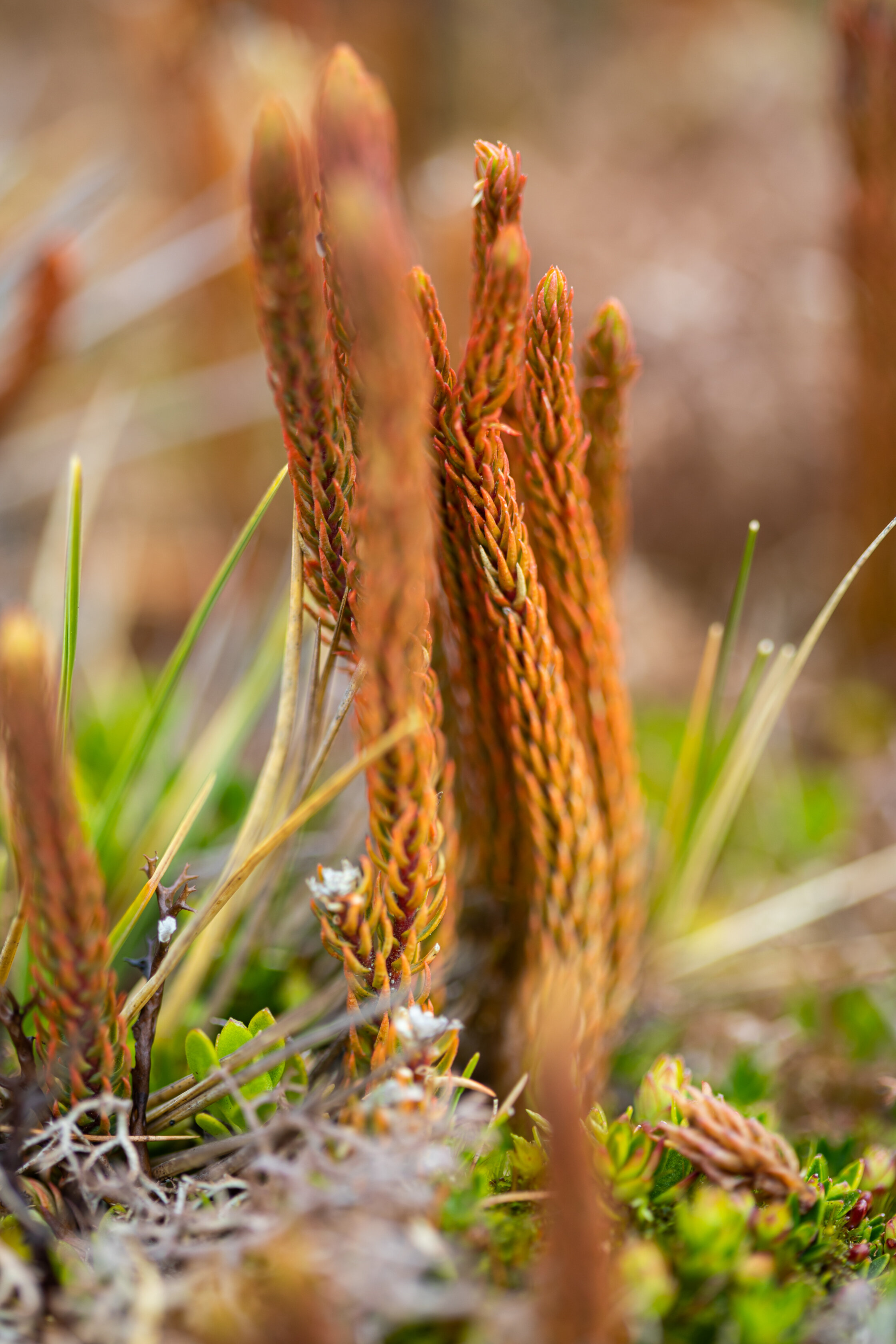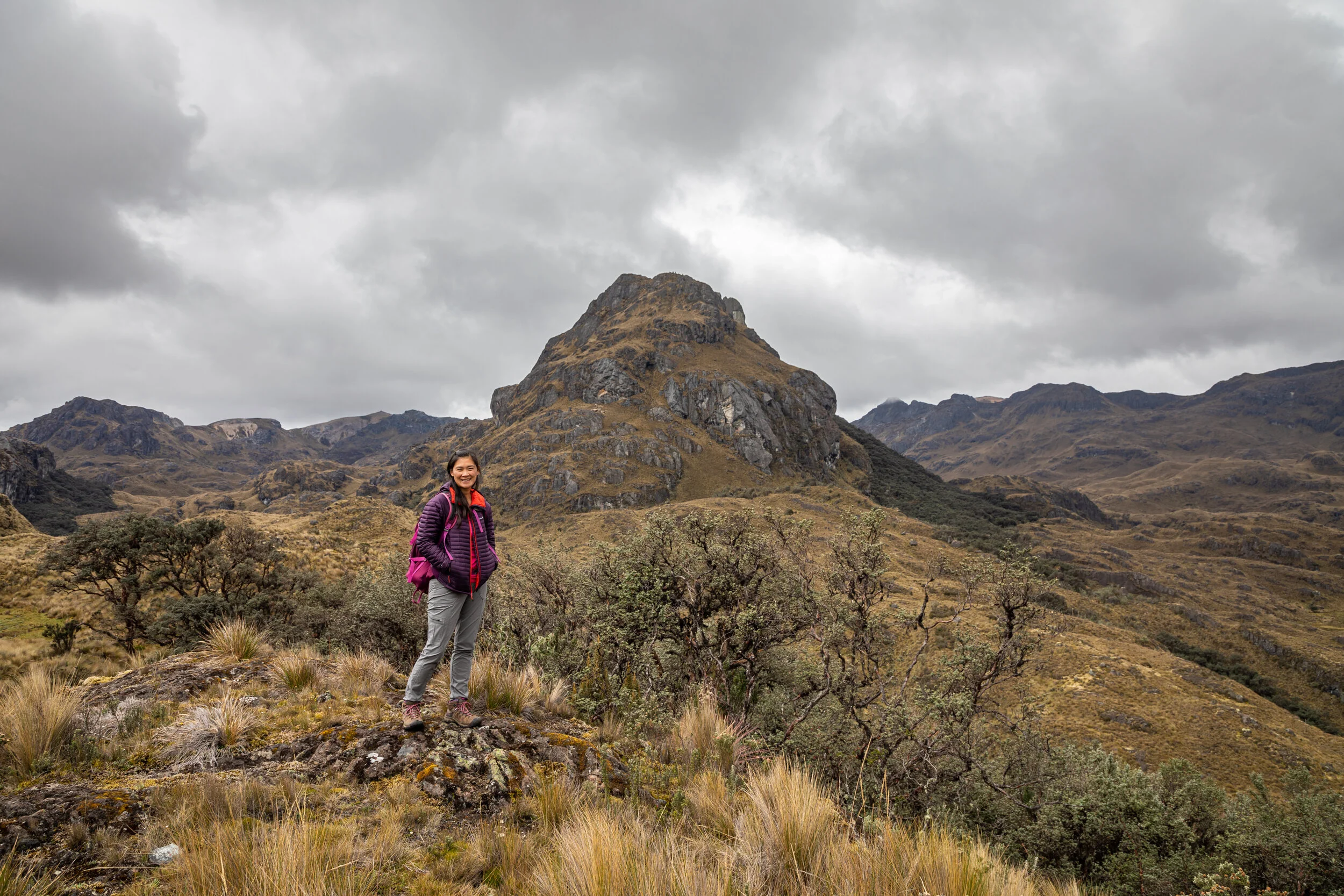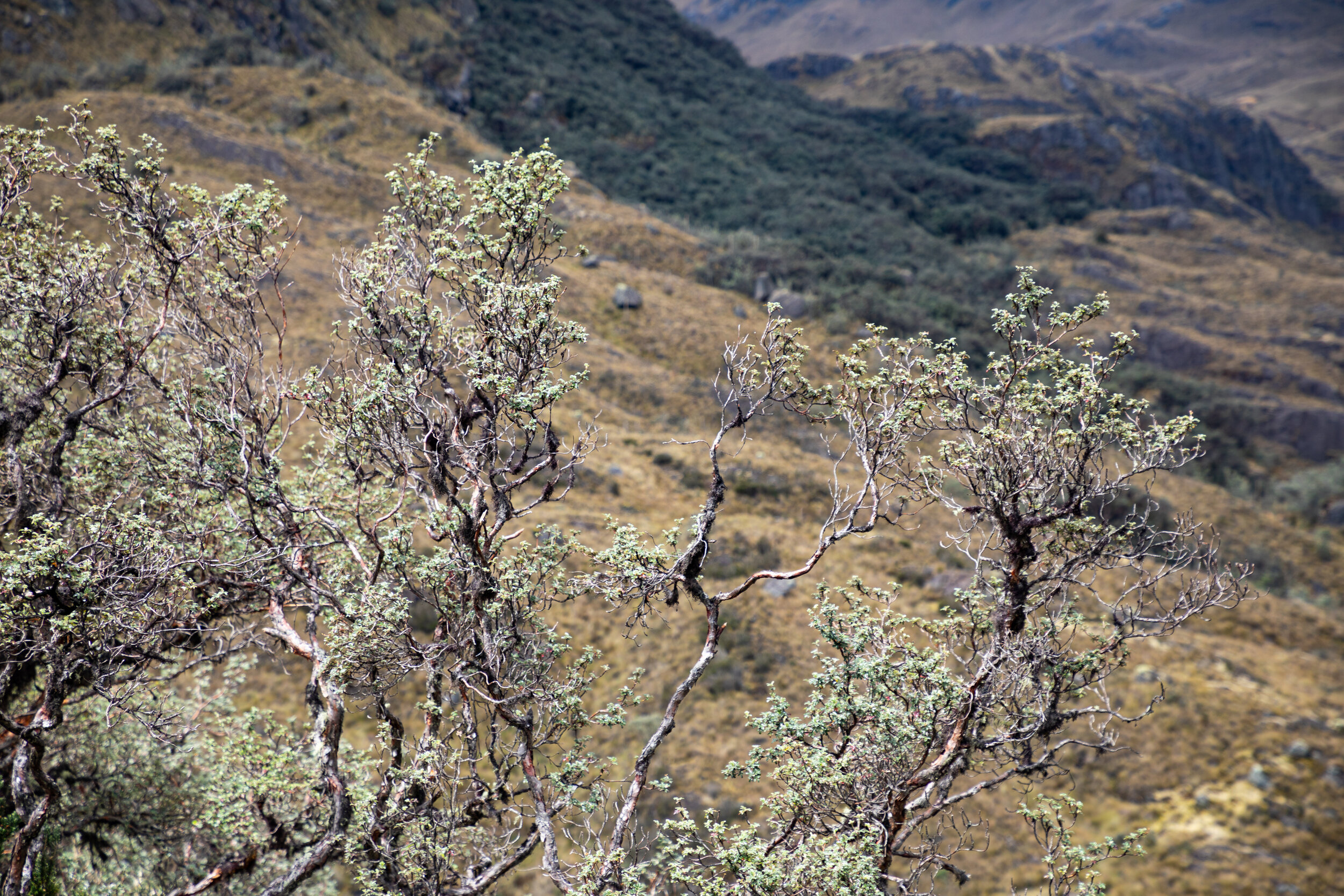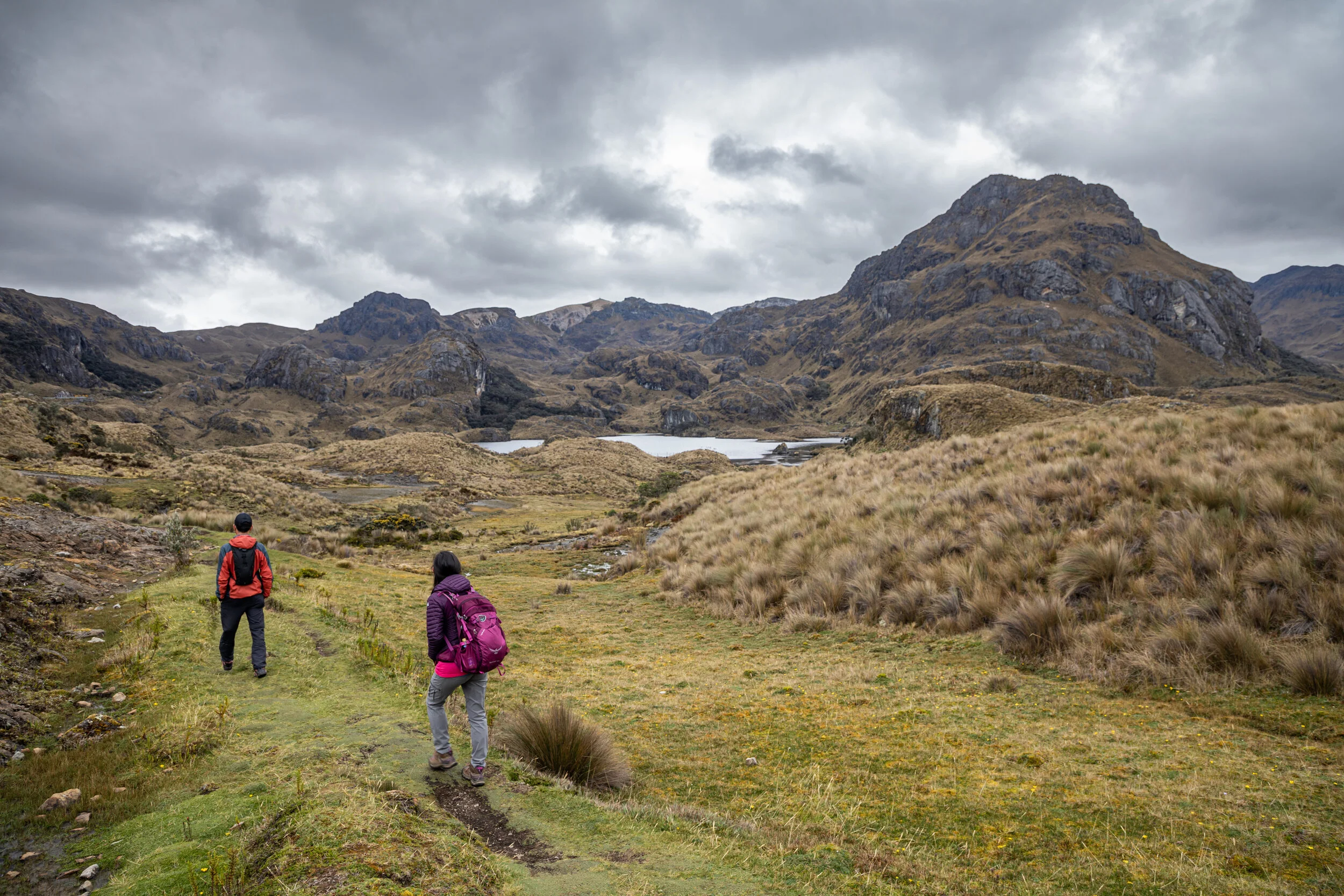We arrived in Cuenca late that night after a seriously long day of driving and sight-seeing. We woke up early the next morning to once again spend the day with Flavio and Jorge. Instead of exploring the city, we first headed straight up into the nearby mountains. About 30 kilometers west of Cuenca is one of the most unique areas of Ecuador, El Cajas National Park.

The lower elevations of the park are covered in cloud forest, perennial high mountain forest, rivers, and many, many lakes. Our first hike took us around one of the largest lakes, Laguna Llaviucu, on a quiet, lush nature trail surrounded by a wide variety of plants.





Flavio’s nature-loving side came out during this short hike. He painstakingly scoured the undergrowth to find us the many varieties of vibrant, beautiful plantlife that makes the Cajas area unique. It felt like we were up in the rain-forests near Seattle. The trees were covered in all sorts of moss, everything was vibrant green, and there were mushrooms growing up the trunks of the trees. We spotted countless types of flowers, including several species of orchid. We were originally prepared for some strenuous hiking in Cajas, but we ended up taking a pleasant, slow-paced, leisurely stroll instead. Our bodies were still recovering from all that trekking and climbing. This is exactly what we needed!













As we reached the other side of the lake, we emerged from the forest and admired the view looking up the valley towards the upper area of the park. It was a wonderful scene. Horses were grazing in the meadow, clouds were gently rolling through the valley, and we passed by an abandoned brewery with some fascinating history. After watching a pack of trail runners pass by, we rounded the lake and made our way back to the car.





The lower part of Cajas National Park was an unexpected surprise with its lush, green foliage. The higher-elevation area of the park was something truly unique and completely different. Upper-Cajas sits above the continuous forest line and below the permanent snowline, which means it is considered within the páramo ecosystem. Because of its unique conditions, this area is an evolutionary hotspot.
We hiked along well-worn paths and explored the nature and one-of-a-kind landscape that looked like a cross between Scotland and Iceland. Hidden within the straw grass were many varieties of colorful flowers and plants, and there were birds everywhere.





















Once we passed the lake, we descended into a more protected valley along a tiny stream. This is where we found the grove of Polylepis trees. These trees are part of the rose family and are endemic only to mid and high-elevation regions. The name comes from the Greek words poly (many) and letis (layers), referring to the multi-layered bark. The colors were subdued from a distance, but up close the trunks were a deep orange-red and the leaves a beautiful shade of sage-green. It felt like this grove was the heart of Cajas.

























The sky was the perfect backdrop to a landscape like this. Although I’m sure it would be beautiful with bright, sunny skies, we thought it was more fitting with the dark, textured clouds filling the sky. While we were hiking Flavio talked about his special connection to El Cajas and how it saved him from a dark period of his life. Now it is his personal training ground for long-distance running. We didn’t have much time to spend in the park, so it felt like this would be the kind of place we would need to return to in the future for further exploration.